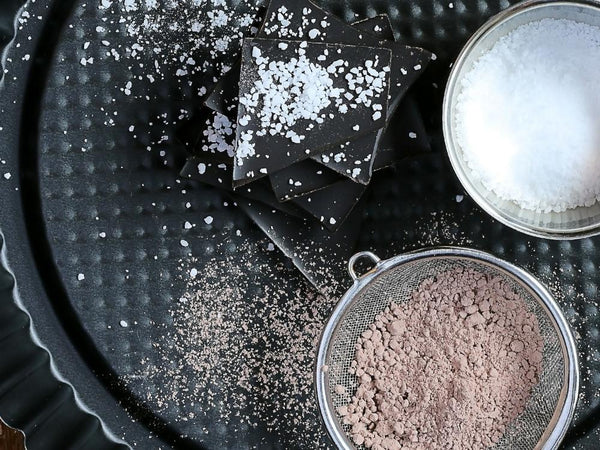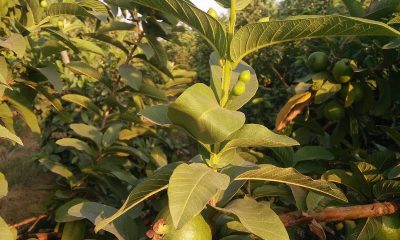Health
Benefits of Ayahuasca and side effects

Discover the Benefits of Ayahuasca + Dangers and Possible Side Effects.
Have you ever heard of a ceremony and the benefits of ayahuasca? Ayahuasca has been used for centuries in “healing ceremonies.”
It is about drinking a hallucinatory mixture of a plant and a vine under the guidance of a shaman with the aim of self-discovery and enlightenment.
This can sound intriguing, scary, or both. You may be wondering, is ayahuasca legal? Ayahuasca’s legal status is murky at best, but the substance it contains, DMT, is illegal in the United States and most other countries (more on this shortly).
The ayahuasca experience is said to be full of hallucinations that can lead to spiritual healing. Recently, ayahuasca has gained more widespread attention as an open (and now closed) retreat in the United States.
Some researchers also think that it could be used as a form of treatment for depression; But, it also contains powerful compounds that can also cause some serious side effects.
Health benefits of ayahuasca
1.- Benefits of ayahuasca for depression
A small open-label trial was recently conducted in an inpatient psychiatric unit. The trial researchers theorized that since the “natural psychedelic drink” rich in DMT and harmine causes feelings of subjective well-being, then it may also have antidepressant effects.
However, the trial was very small and very limited; they only gave six subjects currently experiencing a depressive episode just one dose of ayahuasca (AYA).
Did they find it? There were “statistically significant reductions of up to 82 percent in depressive scores” between baseline and days 1, 7, and 21 after the subjects took the AYA.
Depressive scores were measured on the following scales: the Hamilton scale for depression (HAM-D); the Montgomery-Åsberg Depression Scale (MADRS); and the Anxious Depression subscale of the Brief Psychiatric Rating Scale (BPRS).
The researchers conclude that taking AYA produces “fast-acting anxiolytic and antidepressant effects in patients with a depressive disorder.” Again, keep in mind that there were only six subjects who received the Amazon mix once.
Another open trial on depression was also conducted by researchers. This time there were 17 psychiatric patients as subjects (still very young) and again they received a single dose of ayahuasca.
The trial results reveal that of the 17 subjects, six experienced “rapid-acting antidepressant effects” after the single dose.
So, about 35 percent of the patients showed improvement, while 47 percent of the patients vomited as a result of taking the benefits of ayahuasca.
2.- Benefits of ayahuasca for pain
A research article analyzed the possible use of ayahuasca in grief therapy. The researchers compared 30 people who had taken ayahuasca with 30 people who had attended peer support groups. They then measured levels of pain and experiential avoidance.
The ayahuasca group had a lower level of distress and demonstrated some psychological and interpersonal benefits. Open responses from this group also included descriptions of emotional release.
As you can see, research and clinical findings remain very limited (in part due to the legal status of DMT) on the therapeutic uses of this substance to treat depression or manage grief.
Side effects of ayahuasca
According to some specialists, the benefits of Ayahuasca are not for anyone who thinks that Ayahuasca is a ‘magic pill’ or a ‘magic bullet’ that you just have to take, and your life will be repaired.
The so-called “neutral effects” of ayahuasca can include:
• Sedation
• Nonsense visual “noise”
• Strong visions; some typical reports include snakes, big cats, insectoid aliens, and goddesses
• Auditory hallucinations and/or sound distortions
• Alteration of the sense of space and time
• Greater likelihood of embracing magical thinking, paranormal ideation
Negative effects, also known as “bad trips” are known to include:
• Nausea
• Diarrhea
• Throwing up
• Body pain
• Imbalance, difficulty walking
• Sweating and chills (alternate)
• Other symptoms similar to those of flu or food poisoning
• Afraid
• Paranoia
• Feeling like you’re losing your mind
• Feeling like one is dying
It is not clear exactly all the medications that can interact with ayahuasca, but mixing antidepressants with ayahuasca can be a deadly combination.
The greatest risk of taking ayahuasca is serotonin syndrome, a heart condition of increased heart rate and blood pressure, usually instigated by a high-dose mix of ayahuasca with other medications, particularly antidepressants such as SSRIs or St. John’s wort.
People who take such medications should not drink ayahuasca, it is also suggested that those with “strong paranoid tendencies” or “extreme anxiety” avoid ayahuasca because it alters perceptions of reality.
There is also the danger of getting hurt while in ayahuasca or not knowing exactly what is in the version of the tea they give you. Both are some very serious risks.
How to use Ayahuasca
There are several Peruvian ayahuasca retreats. However, it is recommended that anyone interested in taking ayahuasca do their homework beforehand, even talking to people who have already had the tea.
They also advise only taking ayahuasca in the presence of an “experienced ayahuasca drinker who is also experienced with the guide.”
Experts advise not to buy ayahuasca online and never take it alone. According to the Ayahuasca Healings, this nature-based drug should only be taken with the guidance of an experienced and reputable shaman.
What is Ayahuasca?
Ayahuasca, also called “hoasca”, “yagé” or “mother ayahuasca”, is a mixture of two different plants: a perennial shrub called chacruna (Psychotria Viridis ) and the ayahuasca vine (Banisteriopsis caapi ).
Both plants can be found in the Amazon rainforest. Chacruna contains a substance called dimethyltryptamine or DMT.
To create Ayahuasca tea, the two plants are combined and boiled during a fire for many hours.
The DMT in the chacruna creates the experience or “trip” while the ingredients in the vine allow the body to metabolize it.
What is DMT?
It is a powerful and natural hallucinogenic compound that is structurally related to a drug you may have heard of before: LSD. Do you want to know another strange and interesting fact about DMT?
Naturally formed DMT has been found in the body fluids of people diagnosed with schizophrenia, a serious mental disorder in which patients interpret reality abnormally.
Like LSD, DMT is also considered a Schedule I drug under the United States Controlled Substances Act.
According to the US Drug Enforcement Administration, “Schedule I drugs, substances or chemicals are defined as drugs with no currently accepted medical use and with a high potential for abuse.”
What are the general claims about this Amazonian drink containing DMT?
Supposedly, «The Ayahuasca ceremony is used to heal on all levels: physical, emotional, psychological and spiritual.
It is known to provide profound insights into the nature of reality, who we are, and our place in the Universe. ”
The tea is intended to be consumed with the guidance of a shaman who specializes in the ayahuasca experience.
The immediate effects of this “shamanic medicine” are said to be felt within 20 to 60 minutes of drinking the tea.
However, the poisoning can last up to eight hours. Effects are known to vary greatly from person to person and from experience to experience.
• Ayahuasca is an amazing tea made from a plant and a vine.
• It contains DMT, a Schedule I drug, which includes other illegal drugs like LSD and heroin.
• The possible side effects of ayahuasca are very concerning (even deadly!) And do not justify the risk.
• More studies are needed to determine whether ayahuasca might have benefits for certain health conditions, such as depression.
• The positive effects that some people seek from ayahuasca can be achieved more safely and healthily without the use of drugs, by spending time in prayer and meditation and developing a personal relationship with God.
If you are struggling with depression and pain, you may also want to explore spiritual or therapeutic counseling
Health
7 shocking health benefits of maqui

Table of Contents
Health
3 Benefits of salt water and side effects

Discover the 3 shocking health benefits of salt water and side effects.
Sometimes the best remedies in life are the simplest. This is true of an ancient skincare hack known for tightening pores, balancing oil production, and rejuvenating skin.
You won’t need fancy skin creams packed with chemicals and preservatives to achieve a youthful glow after this.
You can start to improve the quality of your skin with just two things: purified water and high-quality salt, and you will see how the benefits of saltwater will work miracles for you.
Health Benefits of saltwater
Since saltwater therapy has been used for centuries throughout the world, including ancient Greece, there is strong anecdotal evidence that it works wonders on the skin.
A handful of studies have found the saltwater bath to be particularly effective for troublesome skin conditions, such as psoriasis.
Saltwater is said to benefit your skin in the following eleven ways:
• Closes open pores
• Absorbs excess oil
• Balances oil production
• Kills acne-causing bacteria
• Diminish scars
• Heals scratches and cuts
• Exfoliates dead skin cells
• Restores the natural pH of the skin
• Improves the barrier function of the skin
• Improves hydration
• Reduces inflammation
1.- Benefits of salt water for acne
If you are lucky enough to live near the ocean, you may already know this beauty secret.
But if you don’t live on the coast, just fan warm salt water the next time you have an outbreak.
Try mixing a cup of purified water with a tablespoon of sea salt.
Use a cotton ball to gently apply saltwater to acne and allow it to dry.
By the way, if you try this treatment and your acne still isn’t clearing up within a day or two, maybe your diet is to blame.
Make sure to avoid sugar, processed junk, gluten, peanuts, yeast, and dairy for a while to see if your skin clears up.
Eat plenty of green leafy vegetables, lean protein sources, and healthy fats like coconut oil and avocados; your skin and waist will thank you.
2.- Benefits of salt water for scratches
If you’ve ever heard the expression “throwing salt on a wound,” you probably aren’t very interested in putting salt water near your scratches.
However, this treatment can be beneficial in killing harmful bacteria and speeding up the healing process.
Research shows that bathing in magnesium-rich Dead Sea salt improves the skin’s barrier function, improves skin hydration, and reduces skin inflammation, which are all the things you’ll need if you have a cut or scratch.
Fill your bathtub with warm water and pour in a cup of sea salt.
Take the experience to the next level by adding 10 drops of lavender essential oil.
The scent will promote a deep sense of relaxation – you may even feel like you are in a spa!
3.- Drink salt water to heal from the inside out
The good thing about salt water is that there are many ways to use it. A glass of warm salt water, called “Sole,” is a great way to start your day and promote internal healing.
As long as you use a natural form of salt (and avoid drinking seawater), it will promote hydration, facilitate digestion, reduce inflammation, improve your sleep, detoxify your cells, improve your bone health, and more.
What does salt do to the body
We rarely think about what goes into nature’s most common treasures, like salt.
This natural mineral comes directly from the earth, formed into crystals from a combination of sodium and chloride.
It is found naturally in seawater, making up at least three percent of our world’s oceans. And when seawater is trapped, the water evaporates and leaves salt crystals.
Despite what you may have heard about sodium and your health, a natural source of salt contains vital nutrients that are important for maintaining optimal well-being.
First, salt provides key minerals like sulfur, calcium, sodium, magnesium, silicon, boron, potassium, bromine, and strontium.
With its rich mineral content, salt can help you lose weight, reduce asthma symptoms, improve blood sugar levels, and regulate heart health.
However, keep in mind that not all salts are created equal. Table salt, for example, is highly processed and bleached before it reaches that little glass bottle.
Unfortunately, during mass production, manufacturers strip you of everything good for your health.
The result is a product that does not resemble its original form and can even harm your health. When doctors warn against consuming too much salt, table salt is what they mean.
For your skincare routine and general health, try using these unprocessed varieties:
Sea salt for skin
Natural sea salt contains the many minerals our bodies need, such as magnesium, calcium, sodium, and potassium.
All of these play a role in the health of our skin, allowing cells to communicate with each other and heal problems that arise.
When you don’t have enough minerals, you will see annoying symptoms like dry skin, dullness, irritation, and blemishes.
Fortunately, sea salt can naturally enhance hydration and strengthen the outer layer of your skin to keep it looking healthy.
Himalayan pink salt for skin
Despite the name, there are no salt mines in the Himalayas. The pink salt slabs come from the Khewra Salt Mine in Pakistan, about 300 miles west of the Himalayas.
As the second-largest salt mine in the world, people have been collecting this commodity for more than 2,000 years.
Only in the last decade has it become popular in Western culture. Salt is made up of 95 percent sodium chloride.
The rest is a mixture of polyhalite and other minerals, which give the salt its characteristic pinkish hue.
Due to the lack of processing, it still contains the beneficial minerals that your skin will love.
As you can see, saltwater provide a series of skincare benefits, so if you want to show off shiny and well-groomed skin, do not hesitate to follow each of the tips in this publication step by step.
Health
12 Benefits of Jamaica flower and side effects

Table of Contents
-

 Benefits4 months ago
Benefits4 months agoThe Benefits of Joining Gym Lumolog – Improve Your Fitness & Health
-

 Food1 year ago
Food1 year ago10 + Benefits of carrot juice and side effects
-

 Health1 year ago
Health1 year ago50 Super Healthy (And Very Often Cheap) Foods
-

 Health1 year ago
Health1 year ago5 Shocking health benefits of kinkeliba and side effects
-

 Health1 year ago
Health1 year ago15 health benefits of soursop leaves tea and side effects
-

 Food1 year ago
Food1 year ago8 shocking benefits of leek juice and side effects
-

 Health1 year ago
Health1 year ago15 Benefits of lipton tea and side effects
-

 Health1 year ago
Health1 year agoBenefits of guava leaves Sensually












